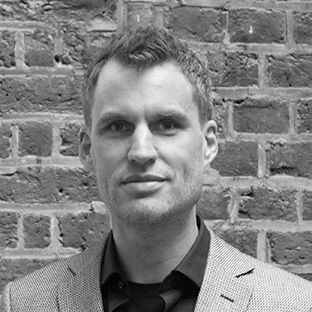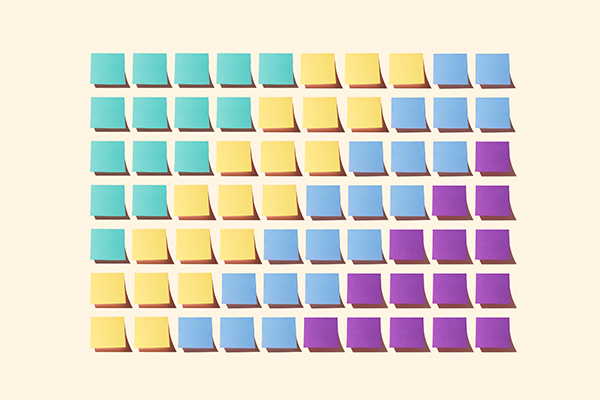Why does the status quo prevail despite our best efforts at change?
We are faced with a huge amount of content. Incoming streams of news, data, demands are sprayed at us from all angles. Things move so fast we often don’t have time to even note what’s changed before the next thing.
These are tough circumstances to live and work in. Little wonder we have heightened cognitive and emotional overload. When we make choices under such limited bandwidth we are working with an effectively reduced IQ.
That’s why we are much more likely to go with the default, stick to known options and avoid risk.
To try and counter this anti-risk instinct, I shared some thoughts on how we can track, make sense and learn from everything we’ve done in response to Covid-19.
I offered the following framework - a simple way of thinking and talking about what our response could mean for the future.
The intent was to offer up a simple way of tracking what's happening in a particular context and to help sift the signals from the noise. Of course, a simple matrix doesn’t capture all the details of complex situations.
But it seems to resonate with a range of people across councils, CCGs, government agencies, charities, schools and professional bodies.
My fear was that if we are not careful, we will just 'spring back' to the way things were. In many ways, this would be a double failure. Not only would this be a failure to seize the opportunity for change, but the way things were done will not necessarily be fit for purpose within a context fundamentally changed by Covid-19.
My hope in pulling together the framework was to avoid such a lose/lose proposition.
Starting conversations about what’s next
Many of the people and organisations that have already used the framework to host conversations are seeking the same exploration: to make sense of what's going on and think about their journey to the future.
These conversations can occur at a variety of levels – from the individual to the community, the organisation to the system. Being clear about where we are looking and why will make it more likely that we are engaging the right people in our conversations.
Are we looking at a team’s response to Covid-19 or are we looking more systemically? If so, how are we defining the system?
Working with practitioners, we see they are using the framework at the heart of, and as a complement to, a more comprehensive process of continuous learning.
Critically, the core principle underpinning the use of the framework, noted in my first blog, is that it’s not a one-off exercise.
It’s a tool for continuous learning. So in that spirit, here’s how we’re developing the model and how you can use it.
Using the RSA Future Change Framework
Scan
The first challenge is to see what's changing. Drawing on some principles of systems thinking, we start by spotting events - the actions and activities that people are taking, the events that are happening, the trends that are emerging.
These are the most visible and obvious signs of change (examples of which were given in the last article). Digging a little deeper we can see how individual and collective behaviours, relationships, networks, rituals and so on are changing.
Underpinning these are structures such as rules, policy, laws, incentives, many of which have changed significantly post-Covid, of course.
At the deepest level of our systems are the mental models, thinking, principles, values and assumptions that form the existing paradigm within which everything else exists. To 'think the unthinkable' is to challenge these accepted norms.
To shift the paradigm (Donella Meadow's primary leverage point in a system) is to open up the possibility of more fundamental, lasting change. In scanning these different levels within the system, we should also consider different scales, from the local to the global.
Map
Next, as we collect these examples, can we map them on the RSA future change framework?
This stage is the heart of my first article, with the top row being those things that are new as a result of the pandemic, and the bottom row being those things we've stopped. The former will inevitably be more visible. Crucial to the latter is to see what is no longer there - what's fallen by the wayside, whether by accident or design. What does that tell us about the importance and value of each activity during - and after - the crisis?
Evaluate
For now, of course, we may not have enough information to accurately allocate the things we've found to the four quadrants.
We may need patient experience or user feedback, cost or performance data alongside contextual information in order to determine whether an intervention is one we want to amplify or whether it was specific to the crisis response. Waiting until we have such information is an important point in avoiding knee-jerk decisions – and speaks to the importance of the time dimension.
Track
To get to the required level of detail requires us to track changes over time. The actions we take in the systems we work in and the changing context we are responding to mean that we are continuously 'course-correcting' and responding to the presenting issues.
This stage is therefore crucial in order to determine what, over time, we might see as a temporary or lasting measure, and whether other work and approaches become redundant as things change.
It is entirely likely, as some have found, that certain measures shift category over time. Something that was innovative and seemed worthy of amplifying into the future may be rendered a temporary measure as time moves on.
Measures that were relevant in the immediate aftermath of the lockdown may not be those required to meet the demands of the next phases of opening up society. In any event, society itself is in a different place to where it was eight, ten, twelve weeks ago.

Respond
The toughest phase may be the next one - determining how (and when) we best respond to the resulting challenges for each quadrant. How might we…
- end temporary measures in ways that enable us to learn from the experience?
- amplify innovative measures in ways that lead to systemic change?
- let go of obsolete activity in ways that avoid regression to the norm?
- restart paused activity in ways that add most value?
Previously we’ve undertaken research into new ways of addressing complex societal challenges such as these, defined as the imperative on public servants to move fast and fix things. In our study, we identified a range of methods that support work in complex settings where traditional approaches are not fit for purpose.
We can’t address questions such as these through linear processes of planning and delivering solutions - we are not working in areas where reductionist thinking and presumptions of direct causation are helpful. Instead, we advocate the combination of systemic understanding, entrepreneurial activity and commitment to impact that underpin the RSA’s approach to change.
Reflective learning
Of course, models are only helpful if people find them useful. The way people have used the RSA future change framework in a variety of contexts has been enlightening.
Organisations and teams have used it to frame conversations (both internally and systems-focused), often in an impromptu fashion or as part of existing meetings.
The value of these conversations may never be known, but perhaps, alongside other models and tools and with inspirational leadership from people across systems and communities, such conversations are helping shape a more positive future.
Leadership for creating real, lasting change
For me, the core challenge we face is also a core lesson from the pandemic to date.
This is that we do not live in a world of stability and direct causality. We live in a world of constant change that emerges from the interactions of the various parts of complex dynamic systems.
As a result, we can’t predict, mandate and control events with any degree of certainty in order to bring about the kinds of change we want to see nor manage the kinds of change we don’t. No amount of centralisation, command-and-control management or prescription can achieve that.
Rather, as Keith Grint elaborates, working in such uncertainty requires leaders who “ask the right questions rather than provide the right answers, because the answers may not be self-evident and will require a collaborative proves to make any kind of progress”.
Such leadership is less about pulling levers of hierarchy and power and more about taking human approach, leveraging the power in co-operation, humility and empathy. And it is those who are able to host open, collaborative conversations in this spirit - with families, teams, organisations, communities - who will be the kind of leaders we’ll need.
It remains my hope that new and emerging ways of thinking and behaving filter down to public consciousness and change the ‘accepted wisdom’.
We might even get over our anti-risk instincts.
Explore the RSA Future Change Framwork, including a toolkit to use it yourself and information about an RSA-run workshop for your team.
Related articles
-
Getting your idea to thrive in a complex system like the NHS
Karen Fitzgerald
Leadership should focus on implementation over innovation.
-
How to create real, lasting change after Covid-19
Ian Burbidge
We must look for the potential of change in the crisis response. The post-crisis task is to find ways to amplify and embed the most promising changes and innovations.
-
Good process is vital for good government
Matthew Taylor
Bad process is less risky in the short-term. But it won’t deliver real change. Matthew Taylor and the Policy Innovation Unit’s Dr Andrea Siodmok explore what makes a process good.





Join the discussion
Comments
Please login to post a comment or reply
Don't have an account? Click here to register.
Thanks for this. On your headline question your approach to take a step back to 'scan' the system at multiple levels (events, trends, rules, laws, behaviours, values etc.) is very worthwhile.
https://systemsthinking.blog.gov.uk/2020/04/01/the-butterfly-effect/
In case helpful, above is a link to an article written for the HM Government Cabinet Office systems thinking team where you can find an approach to scan for mechanisms that 'lock in' a system into an undesirable state or trajectory (in this case the global food system and its negative environmental impacts). We analysed a number of mechanisms including knowledge deficits, economic/regulatory constraints, and sociocultural and biophysical constraints. It's crucially important to consider multiple lock in mechanisms, to ensure that sufficient interventions are targeted to allow effective system transformation. If you think of a public health example like reducing smoking rates in the UK, it’s often multiple complementary interventions that make the difference. As you rightly point out these interventions span multiple levels, from structural factors such as incentives and regulations, to those at the level of mindsets and values. For more information on those deeper leverage points I also invite you to see book link within.
Thanks,
Tom Oliver
Professor of Applied Ecology
Senior Fellow Defra Systems Research Programme
Research Division Leader for Ecology and Evolution
School of Biological Sciences, University of Reading
http://www.reading.ac.uk/biologicalsciences/about/staff/t-oliver.aspx
Well thought through and most impressively, recognising it's limitations and that there is scope for more insight with adaptation. Thank you, Ian